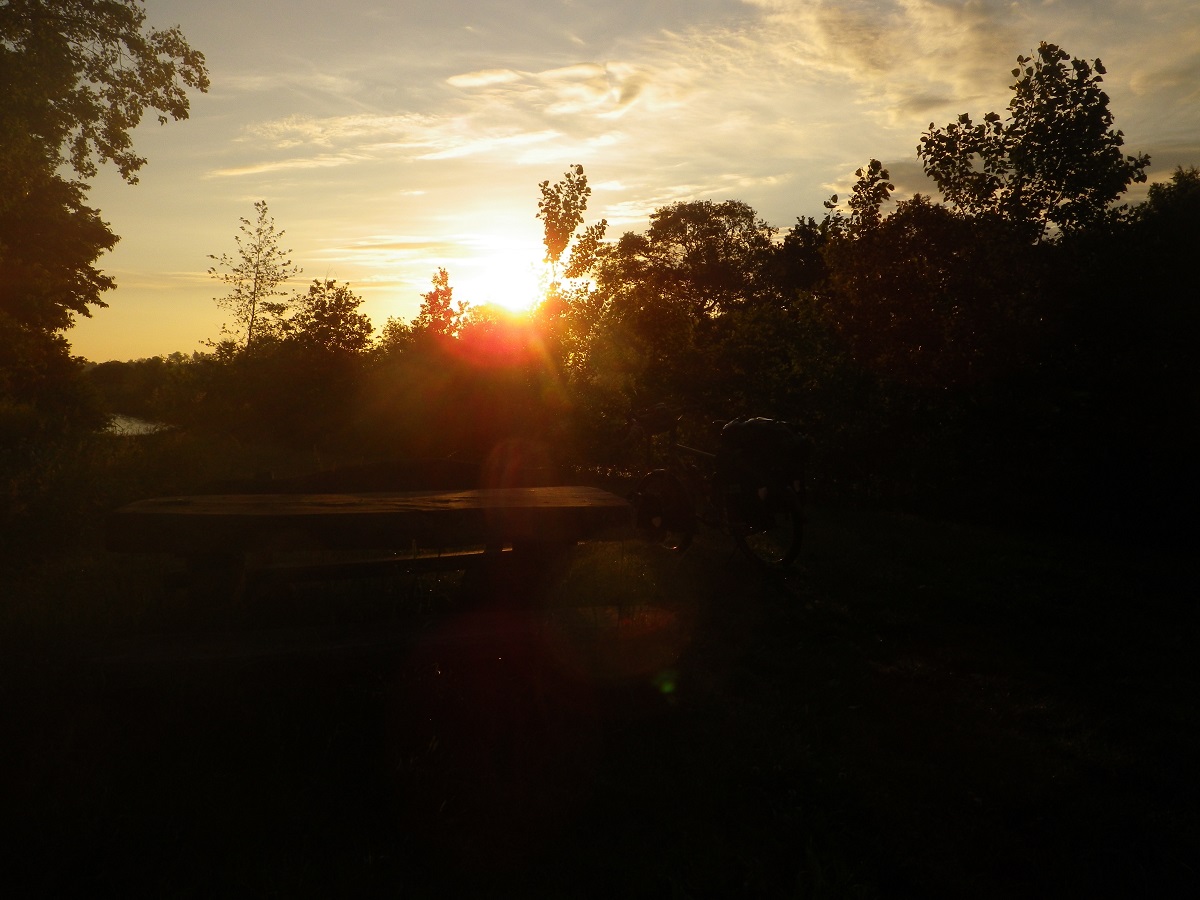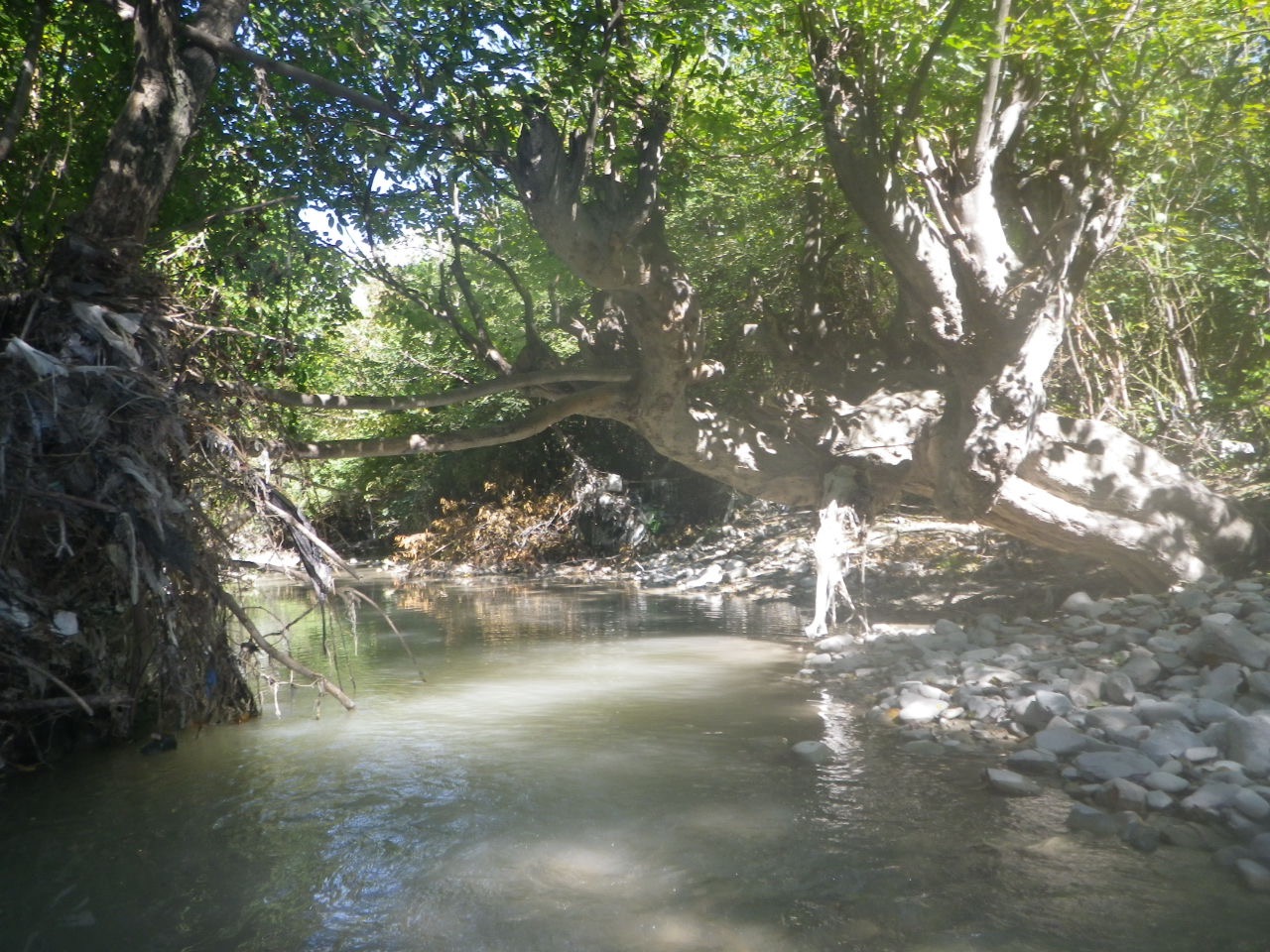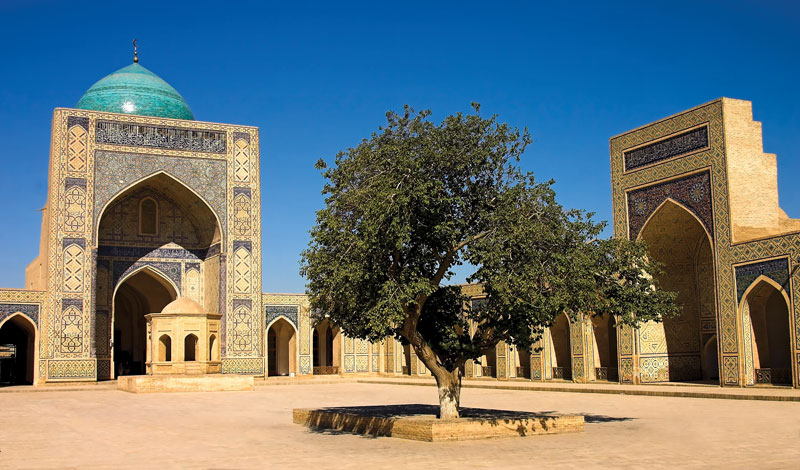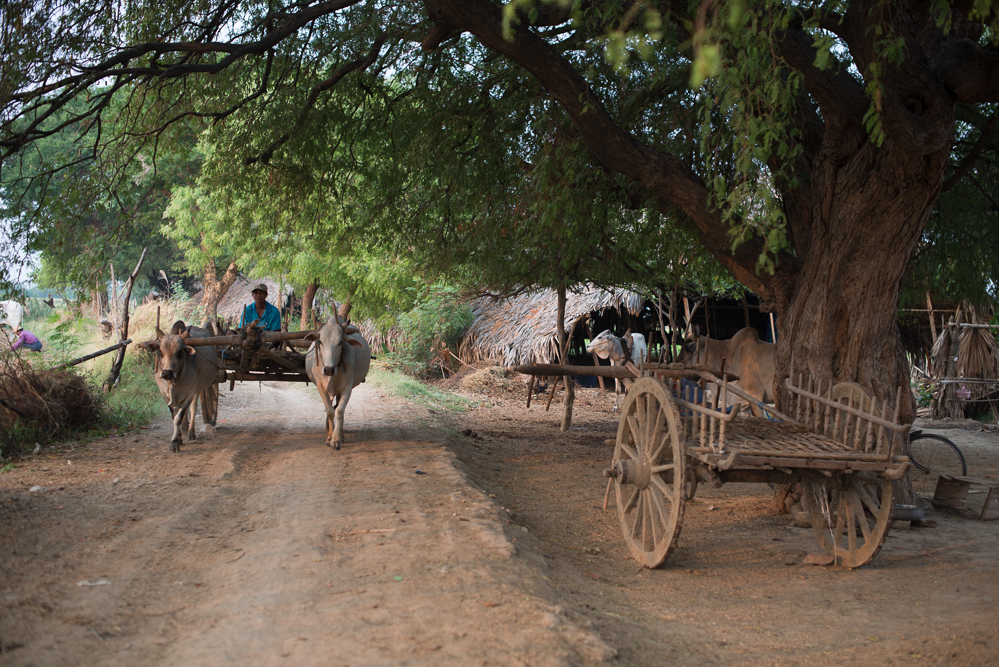Bouillon Magazine, 31 January 2021
I sit shivering below a statue of the elephant god Ganesh, and carefully spoon in the hot stew while the mist steadily engulfs the wooden house. I have not been this cold in months, especially in tropical Indonesia, but today everything is different.
In the pitch dark I stuff my tent in my bags. It is just after four in the morning and the muezzin is calling believers to pray. Time to take advantage of the cool morning hours and cycle some of the 2,400 meters up before it really gets hot. From here I can hardly imagine that I can just ride up a volcano, but according to my map there should be some kind of road. After all, why would I cycle around it if I can also go over it? Besides, I always wanted to know what it is like to stare into such an endlessly deep crater. So here I am, at the foot of the Javanese Bromo volcano that rises up from the paddy fields like a smoldering cone in the morning mist.
I-shall-not-walk, I-shall-not-walk. At an altitude of 1500 meters the fun is over. With sweat in my eyes, I breathlessly repeat my stubborn mantra. My shirt is soaked and drops slide down my chin as I grab the handlebar again. So far the road has been remarkably good, but I have landed on a crumbly path of broken tiles with more holes than I can dodge. The road is so steep in the hairpin bends that I have to stand on my pedals and push my 45 kilos of bicycle and luggage up with short spurts. Sweat drips from every pore of my body and sometimes I lie on the side of the road, dead to the world and gasping for breath. I-shall-not-walk. What on earth did I get myself into?
When I finally reach the top, I suddenly notice how cold it is at this altitude. Soaked with sweat and surrounded by dense fog, I know it is high time for a break. I can’t go any further and realize that I have not eaten for hours despite my ridiculous effort. I have to eat now, for I fear that I will be chewing my fingers before I have had time to cook my rice. A boy sleepily points at a motorbike with two steaming pans tied to its back. But a bowl of soup with overcooked meatballs and a few sprigs of scallion will not cut it for me.
I turn onto a bumpy road towards the village at the rim of the crater. The fog is so dense by now that I can barely see two meters in front of me. Near exhaustion, I half-haggardly cling to every passer-by: Warung dimana? Where is the local canteen? They look somewhat helplessly at my mad insistence to eat rice, and not those mushy noodles from the only food stand in the village. Is there no one here willing to sell me a plate of rice? After a few awkward encounters I end up at a junction in the center of the village. Looking slightly desperate, I drape myself over my bike, having absolutely no plan and not the least bit of energy to move on.
But then, like an angel out of the fog, a young woman appears who beckons me and resolutely decides that I am going home with her to eat. I stammer my thanks in three languages and follow her, docile and exhausted. No longer cycling, but who cares? Five minutes later I take off my dirty socks with numb fingers and dump then at the front door. I carefully step inside, afraid to touch something with my sweaty cycling clothes.
I am directed to sit next to a fire which is burning in an old cast-iron stove. Before I realize, I am surrounded by family members and pots of food and with a mug of sugary instant coffee in my numb hands. The family has just had lunch but by the looks of it there are plenty of leftovers. Under the watchful eye of the Hindu god Ganesh, who observes the whole scene from the house altar, they fill my plate to the brim with delicious food.
On my plate lies nasi jagung, rice with corn grown on these fertile volcanic slopes. Next to it lies a beautiful tongseng, a typical Javanese stew that I know from the lowlands, where it is usually made with beef or goat. This good Hindu family obviously doesn’t eat beef, so our version is with chicken, which is a little lighter but just as tasty. The tender chicken tongseng, or tongseng ayam, is slowly cooked in spicy coconut milk with sweet soy sauce and is the pride of the region. They didn’t skimp on chilies today; assisted by the usual suspects like ginger and fresh galangal, they quickly chase the cold from my body.
The crunch of the cabbage and the piping hot corn rice give me warmth and the strength to look up from my plate for a second. What is Ganesh actually doing here in Islamic Indonesia?
My hostess tells me this area is inhabited by the Tenggerese, descendants of the Hindu-Buddhist Majapahit Empire, who were driven out by the advancing Islam in the fifteenth century. But was all of Java occupied? No, a small settlement bravely resisted the usurpers. These loyal Hindus mainly did this by entrenching themselves in the most remote corners of Java. As a result, this isolated community on the edge of the volcano has managed to maintain its unique blend of Hinduism, Buddhism and animism for over five hundred years. They have preserved a series of remarkable rituals, such as an annual sacrifice ceremony during which villagers throw vegetables, money and live goats into the volcano. All of this is done to appease Brahma, after whom the volcano is named. The Tenggerese believe that an eruption means that their supreme god is angry, so I hope Brahma is in good spirits today, as I plan to camp on the plain next to the crater.
Despite the tongseng-booster, my legs feel like lead as I sit at the table and joke with the family about my idiotic volcano mission. More than anything I would like to put my head down by the stove and fall asleep, but I don’t want to impose myself any further on this lovely family. Still, I cannot prevent my plate from being filled twice more, challenging even my usual bottomless appetite.
After lunch I quickly change my clothes. I hoist myself into a dry shirt, sweater, raincoat, long pants and woolen socks. It has been a while since I dressed for cold, damp weather. The fog has lifted a little and the top of the volcano appears between the shrouds of mist.
I pedal the last two kilometers to the top; the final heavy strokes before I stand at the edge of the crater plain. Carefully I descend down a steep and narrow dirt track onto the dimly lit plain. I quickly pitch my tent in this strange lunar landscape and fall asleep at 6:30, watched over by a pleased Brahma. After all, it is not every day that he sees someone going to such lengths to lie at his feet.
Javanese tongseng ayam
Traditionally, this recipe is made with goat meat, but in different regions variations can be found with lamb or mutton, beef, chicken or even mushrooms and tempeh.
Ingredients for 4
3-6 red chilies(rawit), finely chopped|1 tsp salt|1tsp coriander seeds (or ¾ tsp powder)|1 inch ginger, finely chopped|1 inch fresh galangal, finely chopped (or 1 tsp powder)|1 inch fresh turmeric, finely chopped (or 1 tsp powder)|4-6 cloves garlic, finely chopped|8 shallots, finely chopped|4 candlenuts or macadamia nuts, lightly toasted|3 tbsp cooking oil|14 fl oz coconut milk|5 kaffir lime leaves|2 salam leaves (optional)|2 stalks of lemongrass, bruised and tied in a knot|2.5 cups chicken stock|1.5lbs chicken thigh fillet, in 1 inch pieces|4 tbsp sweet soy sauce (kecap manis)|2 heaping cups white cabbage, cut into wedges|2 tomatoes, diced|1 tsp (white) pepper|1 tsp sugar (optional)|4 stalks spring onion|
- Grind half of the red chilies in a mortar along with salt and coriander seeds. Keep pounding and add ginger, galangal, turmeric, garlic and half of the shallots. Finally, add the candlenuts and grind until you have a fine, smooth paste.
- Heat oil in a thick-bottomed pan and fry the spice paste for about 4 minutes over medium-high heat until it spreads its fragrance.
- Add the coconut milk, kaffir lime, salam leaves and lemongrass and bring to a boil.
- Let this simmer on low heat for 10 minutes, stirring constantly.
- Then add the chicken broth, bring to a boil again and simmer over low heat.
- Sauté the remaining shallots and chilies for a few minutes in a large wok or Dutch oven.
- Add the chicken, stir-fry on high heat for a few minutes and deglaze with sweet soy sauce.
- Add the coconut broth through a sieve, followed by cabbage, tomato, white pepper and salt, sugar or more soy sauce to taste.
- Reduce the tongseng over low heat until it has the desired consistency.
- Add spring onions, stir well again and serve with white rice or nasi jagung (white rice cooked with corn kernels).
For vegetarians:
Replace the chicken with 2 heaping cups of your favorite mushroom (coarsely chopped) and 14 oz tempeh (diced). First, heat oil in a frying pan and fry the tempeh on medium-high until all sides are golden brown.







